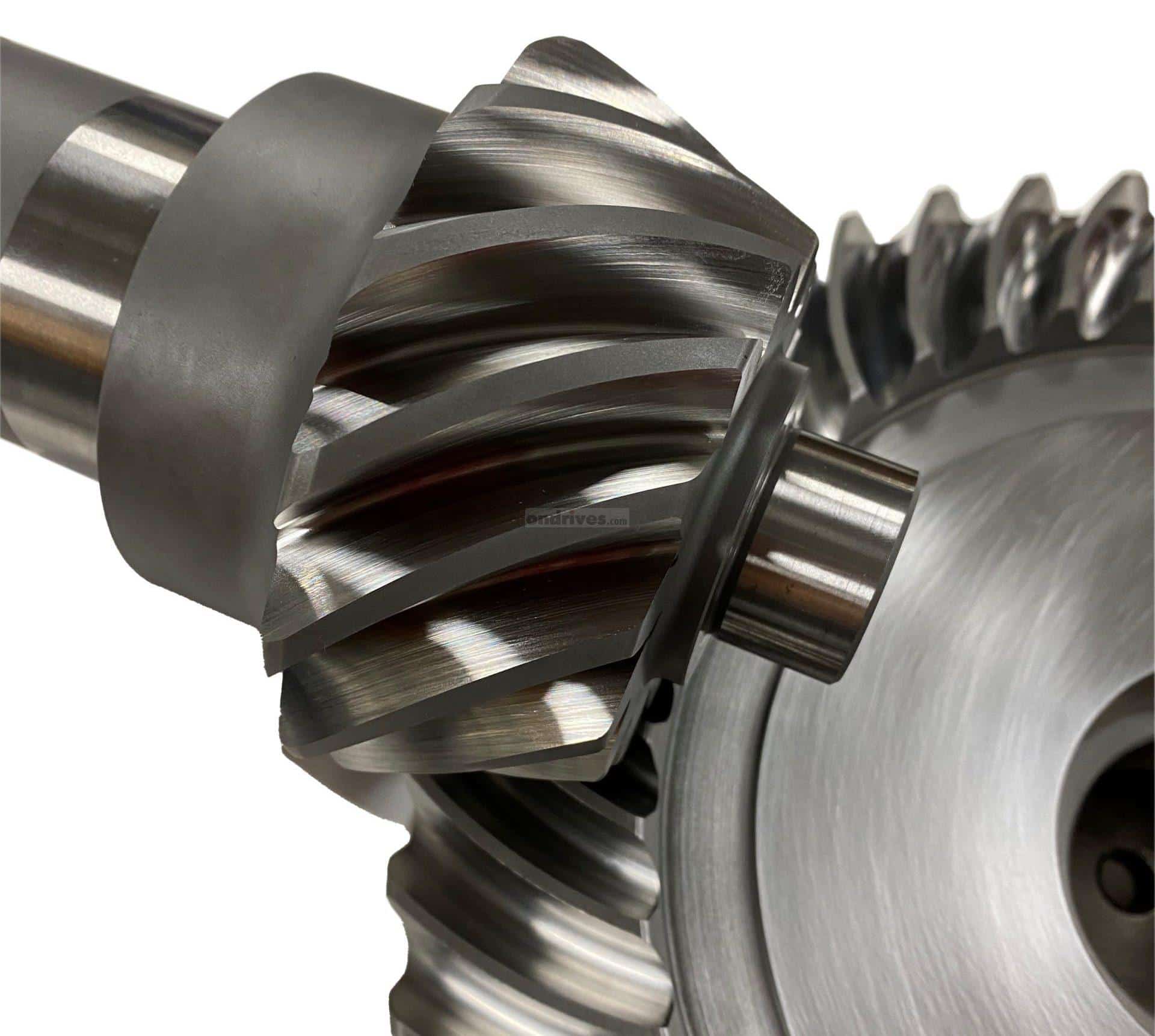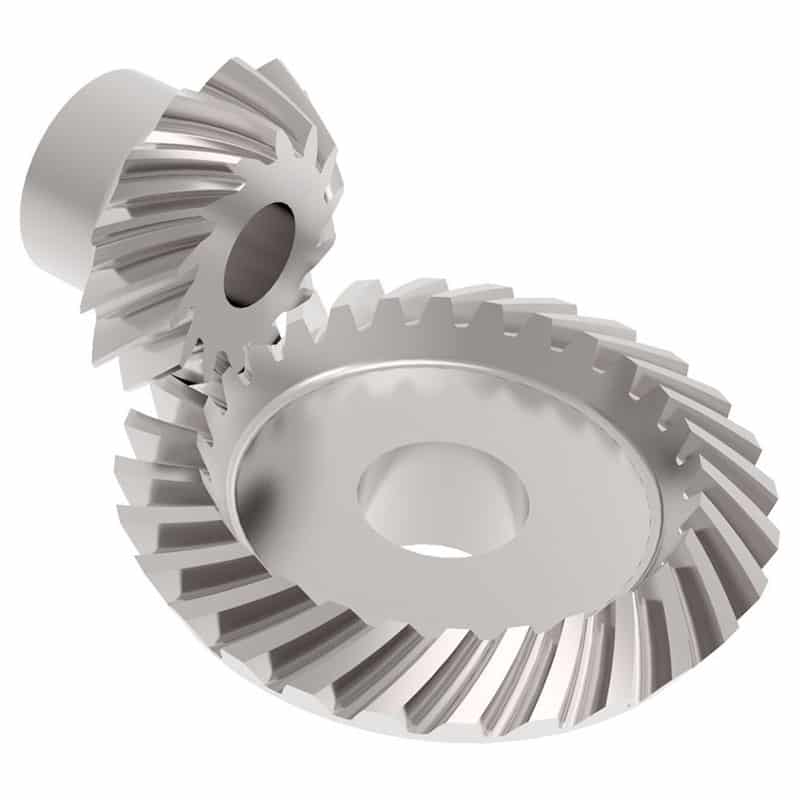Product Description
Product Title: Forklift kit overhaul transmission forklift spiral bevel gear
Product Model: Forklift spiral bevel gear BSX-14463-42001-SX
| Item | Description |
| Product Name | Forklift spiral bevel gear |
| P/N | BSX-14463-42001-SX |
| Applied Model | For CHINAMFG forklift, genuine forklift parts |
| Net Weight (kg) | 3.9 |
| Gross Weight (kg) | 3.95 |
| Qty per Carton | 1 |
| Carton Size (cm) | 33*17*11 |
Spiral Bevel Gear and Output Shaft of Forklift Transmission Box
Forklift spiral bevel gear is a forklift hydraulic transmission gearbox part. Forklift spiral bevel gear and output shaft are used together. In order to avoid improper installation, forklift spiral bevel gear and gear shaft must be purchased as a complete set.
The internal structure of mechanical gearbox and hydraulic gearbox is different, so the installation structure of bevel gear shaft is different. When choosing a spiral bevel gear for a forklift, be sure to recognize the model and part number of the forklift part and forklift model.
/* March 10, 2571 17:59:20 */!function(){function s(e,r){var a,o={};try{e&&e.split(“,”).forEach(function(e,t){e&&(a=e.match(/(.*?):(.*)$/))&&1
| Material: | Aluminum Alloy |
|---|---|
| Surface Treatment: | Polishing |
| Customized: | Non-Customized |
| Standard: | Standard |
| Condition: | New |
| Feature: | Cost-Effective OEM Forklift Parts |
| Samples: |
US$ 28.6/Piece
1 Piece(Min.Order) | |
|---|
| Customization: |
Available
| Customized Request |
|---|

Can spiral gears be used in heavy-duty industrial machinery?
Yes, spiral gears can be effectively used in heavy-duty industrial machinery. They offer several advantages that make them suitable for such applications. Here’s why spiral gears are well-suited for heavy-duty industrial machinery:
- High Load Capacity: Spiral gears have a high load-carrying capacity, allowing them to handle heavy loads encountered in industrial machinery. The helical tooth profile distributes the load across multiple teeth, reducing stress concentration and enhancing overall load-bearing capability.
- Smooth Operation: The helical tooth arrangement of spiral gears ensures smooth and precise gear operation. The gradual tooth engagement minimizes impact and vibrations, resulting in smoother gear meshing and reduced noise levels. This smooth operation is crucial in heavy-duty machinery to ensure reliable performance and minimize wear and tear.
- Efficient Power Transmission: Spiral gears offer efficient power transmission, making them suitable for heavy-duty applications. The helical tooth profile reduces sliding friction, resulting in improved power transmission efficiency and reduced energy losses. This efficiency is particularly important in industrial machinery where high power transmission and energy conservation are critical.
- Durability and Reliability: Spiral gears are known for their durability and reliability. The gradual tooth engagement, load distribution, and reduced sliding friction contribute to their long-term performance under demanding conditions. Heavy-duty industrial machinery requires gears that can withstand continuous use and maintain high reliability, making spiral gears a suitable choice.
- Axial Thrust Compensation: Spiral gears can be designed with opposite helix angles on mating gears to cancel out axial thrust. This axial thrust compensation simplifies gear design and reduces the need for additional components such as thrust bearings. It is particularly advantageous in heavy-duty machinery, where minimizing axial forces and ensuring smooth operation are critical.
Considering their high load capacity, smooth operation, efficient power transmission, durability, and axial thrust compensation, spiral gears are well-suited for heavy-duty industrial machinery. They can handle the demanding requirements and provide reliable performance, making them a preferred choice in many heavy-duty applications.

How do spiral gears handle variations in speed and load conditions?
Spiral gears, also known as helical gears, are designed to effectively handle variations in speed and load conditions. Their unique tooth profile and design features allow them to adapt to changing operating conditions. Here’s how spiral gears handle variations in speed and load:
- Gradual Tooth Engagement: The helical tooth arrangement in spiral gears enables gradual tooth engagement as the gears mesh. This characteristic is advantageous when dealing with speed variations. The gradual engagement reduces impact and minimizes the shock loads that can occur during rapid changes in speed, ensuring smoother gear operation and improved reliability.
- Load Distribution: Spiral gears distribute the load across multiple teeth due to their helical tooth arrangement. This load distribution capability is beneficial when encountering variations in load conditions. By spreading the load over multiple teeth, spiral gears can handle higher loads and minimize stress concentrations on individual teeth. This feature helps prevent premature wear and tooth failure, ensuring better performance under changing load conditions.
- Efficient Power Transmission: Spiral gears offer efficient power transmission, even when there are variations in speed and load. The gradual tooth engagement, combined with the curved tooth profile, reduces sliding friction and ensures smooth gear operation. This efficiency in power transmission helps maintain consistent performance and minimizes energy losses, regardless of speed and load variations.
- Ability to Handle Shock Loads: Spiral gears have the ability to handle shock loads that may occur during sudden changes in load or speed conditions. The gradual tooth engagement and load distribution characteristics help absorb and distribute the impact forces, reducing the risk of gear damage or failure. This resilience to shock loads enhances the overall durability and reliability of spiral gears.
- Flexibility in Gear Design: Spiral gears offer flexibility in gear design, allowing for customization to meet specific speed and load requirements. The helix angle, number of teeth, and tooth profile can be tailored to optimize performance under varying operating conditions. This adaptability in gear design ensures that spiral gears can effectively handle a wide range of speed and load variations.
These features and design characteristics of spiral gears enable them to handle variations in speed and load conditions effectively. Their ability to provide gradual tooth engagement, distribute loads, transmit power efficiently, handle shock loads, and accommodate flexible gear design makes them suitable for diverse applications where speed and load variations are encountered.

What industries commonly use spiral gears in their applications?
Spiral gears, also known as helical gears, find applications in various industries due to their unique design and advantages. Here are some industries that commonly use spiral gears:
- Automotive: Spiral gears are widely used in the automotive industry, particularly in applications such as gearboxes and automotive differentials. They provide efficient power transmission, smooth operation, and the ability to handle high torque loads.
- Industrial Machinery: Many industrial machinery applications benefit from the use of spiral gears. These include heavy-duty machinery such as mining equipment, construction machinery, and manufacturing machinery. Spiral gears provide high load capacity, efficient power transmission, and reduced noise levels.
- Power Generation: Spiral gears are utilized in power generation systems such as wind turbines, hydroelectric turbines, and steam turbines. They play a critical role in transmitting power from the turbine to the generator, providing efficient and reliable power transmission in these energy production systems.
- Aerospace and Defense: The aerospace and defense industries employ spiral gears in various applications, including aircraft engines, missile systems, and satellite mechanisms. Spiral gears offer high load capacity, efficient power transmission, and the ability to withstand demanding operating conditions.
- Machine Tools: Spiral gears are commonly used in machine tools, such as milling machines, lathes, and grinding machines. These gears contribute to the smooth and precise motion of the tools, ensuring accurate machining operations.
- Robotics and Automation: Spiral gears are utilized in robotics and automation systems for their ability to provide precise and efficient motion transmission. They are crucial components in robotic arms, automated assembly lines, and other industrial automation applications.
These are just a few examples of industries that commonly use spiral gears. However, spiral gears can be found in various other applications where the advantages of smooth operation, high load capacity, efficient power transmission, and reduced noise levels are desired.


editor by CX 2024-01-10